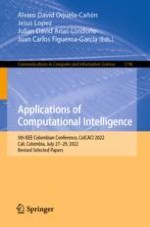2023 | OriginalPaper | Chapter
Escherichia coli: Analysis of Features for Protein Localization Classification Employing Fusion Data
Authors : Alvaro David Orjuela-Cañon, Diana C. Rodriguez, Oscar Perdomo
Published in: Applications of Computational Intelligence
Publisher: Springer Nature Switzerland
Activate our intelligent search to find suitable subject content or patents.
Select sections of text to find matching patents with Artificial Intelligence. powered by
Select sections of text to find additional relevant content using AI-assisted search. powered by
